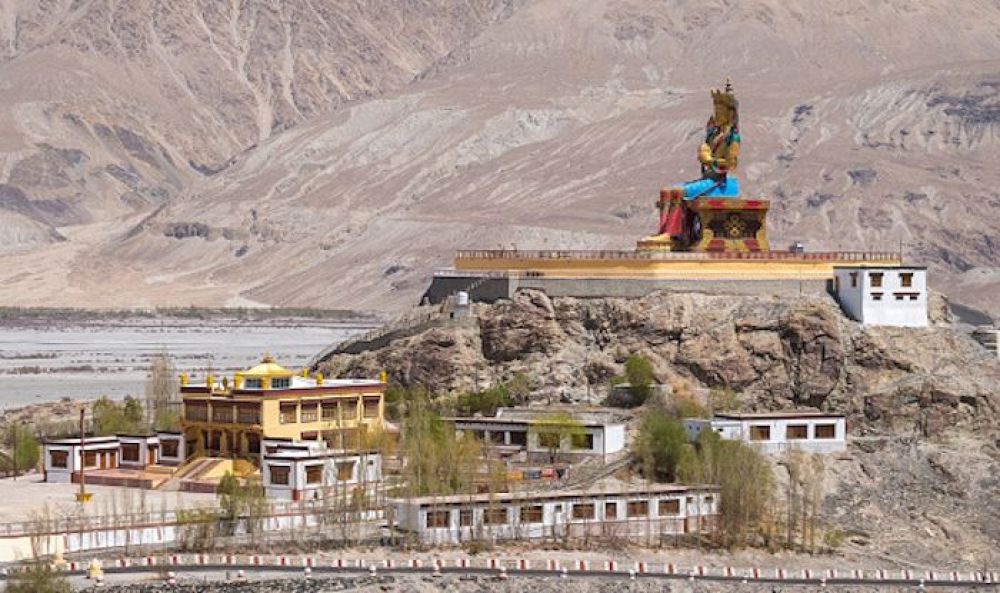

Situated in the Nubra Valley of Ladakh, Diskit is known for its breathtaking landscapes and rich cultural heritage. Historically, tourism in Diskit and the Ladakh region as a whole began to develop significantly in the 1970s. Initially, Ladakh was a strategic military region due to its proximity to several international borders. However, its potential as a tourism destination was quickly recognized, given the unique blend of cultural and natural attractions, such as the ancient Diskit Monastery, which dates back to the 14th century.
As adventurers and explorers began to traverse the rugged terrain of the Himalayas, the enigmatic beauty of places like Diskit turned from well-kept secrets among the most intrepid to sought-after destinations for a wider array of tourists. With the Indian Government's efforts to promote Ladakh as a tourism spot, improved accessibility, and infrastructure developments followed, further nurturing the growth of tourism in the region.
The real boost in popularity for Diskit came after India liberalized its economy in the early 1990s, which led to easier travel and fewer restrictions for both domestic and international visitors. Since then, Diskit has slowly transformed into a prominent feature on the tourist map of Ladakh. The majestic Diskit Gompa stands as a sentinel watching over the valley, attracting spiritual seekers and history enthusiasts alike.
In recent years, homestays and eco-friendly tourist accommodations have started to flourish, allowing visitors to experience the authentic Ladakhi way of life. The annual Dosmoche festival, held at the Diskit monastery, has also emerged as a significant attraction, drawing culture aficionados from around the world to witness the traditional Cham dances and prayers that mark the celebration.
With sustainability and responsible travel becoming more important globally, Diskit's tourism industry has adapted accordingly. The current trend focuses on eco-tourism and cultural preservation, promoting low-impact travel and providing economic opportunities for the local communities while safeguarding their environment and traditions.
Adventure tourism in Diskit is also on the rise, with visitors eager to explore its scenic hiking trails, engage in river rafting on the Shyok River, or undertake a camel safari through the Hunder sand dunes. The push for digital connectivity and social media visibility has made Diskit more accessible to travelers seeking offbeat and experiential travel.
Amidst the challenges posed by global events like the COVID-19 pandemic, Diskit's tourism sector is gradually rebounding with a focus on safety and wellness. Tourism stakeholders are adapting to the new normal by incorporating health guidelines and ensuring a safe environment for tourists, setting the stage for a resilient return of travel to this Himalayan gem.